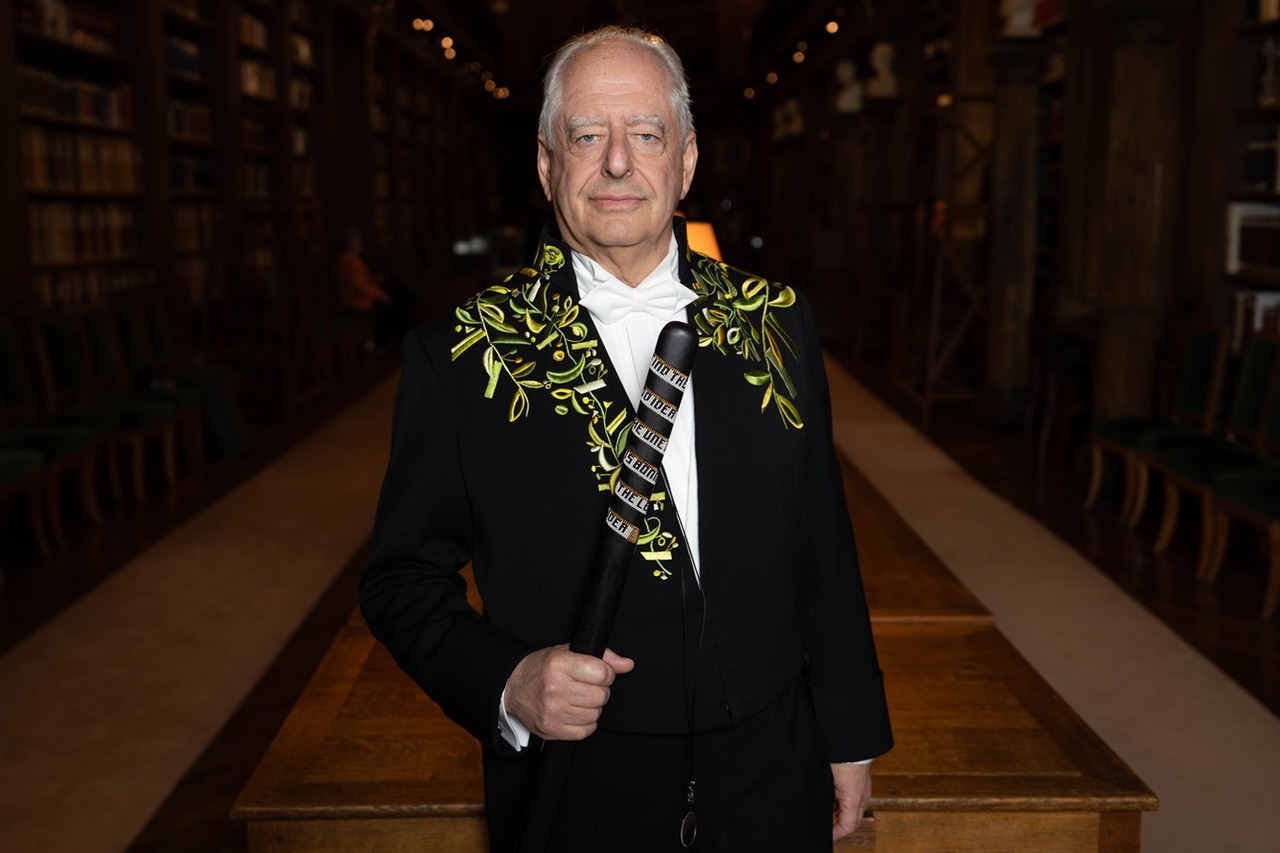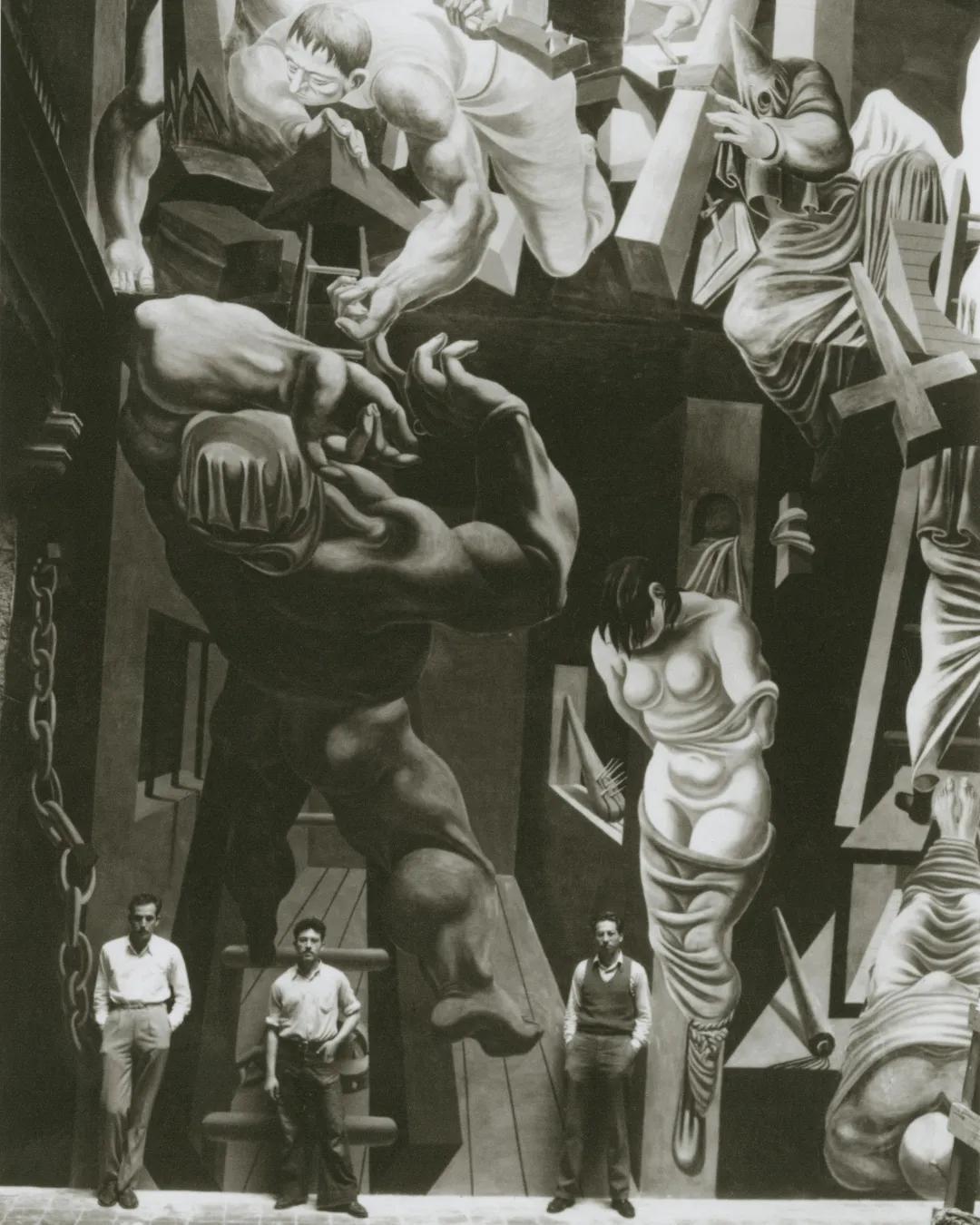Announcing worldwide representation of the John Chamberlain Estate

Chamberlain in his temporary living quarters and studio, Glueck’s Auto Parts salvage yard, Osprey, Florida, August 27, 1980 © 2019 Estate of Marcia Corbino / Artists Rights Society (ARS), New York. Courtesy the John Chamberlain Estate and Hauser & Wirth. Photo: Marcia Corbino
Announcing worldwide representation of the John Chamberlain Estate
Hauser & Wirth is proud to announce exclusive worldwide representation of the John Chamberlain Estate. The gallery's first collaboration with the Estate will be the unveiling of three never-before exhibited sculptures at Art Basel in June 2019. A presentation of Chamberlain's small-scale sculptures will take place this Fall at Hauser & Wirth New York, 69th Street, with a major exhibition in development for New York City in 2020.
Born in Rochester, Indiana, and raised primarily in Chicago, John Chamberlain (1927 – 2011) was a quintessentially American artist, channeling the innovative power of the postwar years into a relentlessly inventive practice spanning six decades. He first achieved renown for sculptures made in the late 1950s through 1960s from automobile parts – these were path-breaking works that effectively transformed the gestural energy of Abstract Expressionist painting into three dimensions.
Ranging in scale from miniature to monumental, Chamberlain’s compositions of twisted, crushed, and forged metal also bridged the divide between Process Art and Minimalism, drawing tenets of both into a new kinship. These singular works also established him as one of the first American artists to determine color as a natural component of abstract sculpture. From the late 1960s until the end of his life, Chamberlain harnessed the expressive potential of an astonishing array of materials, which varied from Plexiglas, resin, and paint, to foam, aluminum foil, and paper bags.

(left) John Chamberlain, PARISIANESCAPADE, 1999 (right) John Chamberlain, Simplysplendid, 1986 © 2019 Fairweather & Fairweather LTD / Artists Rights Society (ARS), New York. Courtesy the John Chamberlain Estate. Photo: Genevieve Hanson
While Chamberlain is often closely associated with the trajectory of Abstract Expressionism, his practice also harnessed the principles of Pop Art and Minimalism. His work also paid homage to the legacy of Marcel Duchamp in its emphasis upon the selection and modification of chosen objects and materials. Chamberlain cited the New York School painters and their contemporaries – particularly Franz Kline and Willem de Kooning – as predominant influences.
Chamberlain also expressed deep admiration for the work of David Smith, whose estate is also represented by Hauser & Wirth. In its collaboration with the John Chamberlain estate, Hauser & Wirth will work closely with the late artist’s wife Prudence Fairweather and her daughter Alexandra Fairweather. Two major initiatives will be to organize and bring to light unseen archival material from the artist’s studio on Shelter Island, New York, and revive the Catalogue Raisonné project, which currently ends in 1985.
‘It is with tremendous excitement that the John Chamberlain Estate begins a new chapter with Hauser & Wirth‘, says Prudence Fairweather. ‘Through this partnership, we look forward to furthering the scholarship dedicated to his practice and exploring ways in which it can be accessed by future generations. In this collaboration with Hauser & Wirth and its remarkable team, we look forward to sharing Chamberlain’s many untold stories through exciting new projects.’

John Chamberlain, Hillbilly Galoot, 1960 © 2019 Fairweather & Fairweather LTD / Artists Rights Society (ARS), New York. Courtesy the John Chamberlain Estate

John Chamberlain, Untitled, 1962 © 2019 Fairweather & Fairweather LTD / Artists Rights Society (ARS), New York. Courtesy the John Chamberlain Estate
During World War II, John Chamberlain spent three years in the United States Navy before enrolling in the Art Institute of Chicago and Black Mountain College, where he developed the critical underpinnings of his work. It was at the Art Institute that he came upon the ‘Walking Figures’ of Alberto Giacometti and was drawn to the raw celebration of metals. Chamberlain cites this encounter: ‘discovering the [Giacometti] sculpture room was the highlight of the two years I went to art school.’ Blurring the lines between Abstract Expressionism, Pop, and Minimalism, Chamberlain seized upon the potential of ‘readymades.’
In 1958, while staying with Larry Rivers at the artist’s Southampton home, Chamberlain encountered a 1929 Ford. Emboldened, he crushed its two rusted fenders by driving over them with his own car, eventually melding them with steel rods and ultimately finding their ‘fit.’ ‘Shortstop’ (1958), now in the collection of the Dia Art Foundation, marked the beginning of Chamberlain’s lifelong engagement with his chosen material. Chamberlain lived and worked in many parts of the United States, moving between New York City, Long Island, Los Angeles, Santa Fe, Connecticut, and Sarasota, before finally settling on Shelter Island.
In many ways, each location provoked a distinct material sensibility, often defined by the availability of that material or the limitations of physical space. In New York City, Chamberlain pulled scrap metal and twelve-inch acoustic tiles from the ceiling of his studio apartment. He chose urethane in Los Angeles in 1965 (a material he had been considering for many years), and film in Mexico in 1968. He eventually returned to metal in 1972, and, in Sarasota, he expanded the scale of his works to make his iconic Gondolas (1981 – 1982).
The movement of the artist and the subsequent evolution of the work is indicative not only of a kind of American restlessness but also of Chamberlain’s own personal evolution: he sometimes described his use of automobile materials as sculptural self-portraits, infused with balance and rhythm characteristic of the artist himself.
‘I never thought of sculpture without color. Do you see anything around that has no color? Do you live in a world with no color?’
Chamberlain abstracted his materials via processes of compression and manipulation without formula. The artist said that he never worked with a plan in mind, but rather employed an experimental practice: ‘I found that the particular principle of compression and wadding up or manipulating with the fingers, so to speak, whether you use a machine or not, has a lot of applications with a lot of different materials and I only use materials that deal with that. If it’s sexual, it’s squeezing and hugging. If it’s instinctive, it has to do with fit and balance.
If it’s emotional, it’s presence. I don’t know how it gets to be intellectual.’ It was this restless pursuit of the new that caused Chamberlain to abandon metal for seven years. He began to favor lighter materials, both physically and conceptually. Chamberlain made works from unused paper bags – pieces that greatly defied weight, transparency, and delicacy. He branched out even further to produce the film ‘The Secret Life of Hernando Cortez’ in 1968, but still maintained that film encompassed a sculptural evolutionary quality.

John Chamberlain, Scull’s Angel, 1974 © 2019 Fairweather & Fairweather LTD / Artists Rights Society (ARS), New York. Courtesy the John Chamberlain Estate

John Chamberlain, PINEAPPLESURPRISE, 2010 © 2019 Fairweather & Fairweather LTD / Artists Rights Society (ARS), New York. Courtesy the John Chamberlain Estate
Chamberlain refused to separate color from his practice, saying, ‘I never thought of sculpture without color. Do you see anything around that has no color? Do you live in a world with no color?’ Chamberlain both honored and assigned value to color in his practice – in his early sculptures color was not added, but composed from the preexisting palette of his chosen automobile parts.
Chamberlain later began adding color to metal in 1974, dripping and spraying – and sometimes sandblasting – paint and lacquer onto his metal components prior to their integration. With his polyurethane foam works, color was a variable of light: ultraviolet rays or sunlight turned the material from white to amber. It was this profound visual effect that brought the artist’s personal Abstract Expressionist hand into industrial three-dimensional sculpture.
Chamberlain moved seamlessly through scale and volume, creating material explorations in monumental, heavy-gauge painted aluminum foil in the 1970s, and later in the 1980s and 1990s, miniatures in colorful aluminum foil and chromium painted steel. Central to Chamberlain’s works is the notion that sculpture denotes a great deal of weight and physicality, disrupting whatever space it occupies.
In the Barges series (1971 – 1983) he made immense foam couches, inviting spectators to lounge upon the cushioned landscape. At the end of his career, Chamberlain shifted his practice outdoors, and through a series of determined experiments, finally created brilliant, candy-colored sculptures in twisted aluminum foil. In 2012, four of these sculptures were shown outside the Seagram Building in New York, accompanied by playful titles such as ‘PINEAPPLESURPRISE’ (2010) and ‘MERMAIDSMISCHIEF’ (2009).
These final works exemplify Chamberlain’s lifelong dedication to change – of his materials, of his practice, and, consequently, of American Art. The subject of many major museum exhibitions, with works residing in dozens of prominent museum collections, Chamberlain was among the artists who represented the United States in the American Pavilion at the 32nd International Exhibition of the Venice Biennale.
Related News
1 / 5




